Pharmacology > STUDY GUIDE > Pharmacology Proctored Study Guide Latest Updated 2022 Already Graded A (All)
Pharmacology Proctored Study Guide Latest Updated 2022 Already Graded A
Document Content and Description Below
Pharmacology Proctored ATI Study Guide Chapter 1: Pharmacokinetics and Routes of Administration Absorption Route of admin affects the rate and amount of absorption o Oral: GI pH and e... mptying time Presence of food in the stomach or intestines Form of meds (liquid/XR) o Sublingual/buccal Quick absorption systemically through highly vascular mucous membranes o Inhalation via mouth/nose Rapid absorption through alveolar capillary networks o Intradermal, topical Slow, gradual absorption o SQ/IM Highly soluble meds have rapid absorption (10-30min), poorly soluble have slower absorption Blood perfusion at site of injection affect absorption o IV Immediate and complete Distribution o Transportation of meds to sites of action by body fluids o Plasma binding protein: meds compete for protein binding sites within bloodstream, primarily albumin. The ability of med to bind to protein can affect how much med will leave and travel to target tissues. Metabolism o Primarily occurs in the liver but can take place in the kidney o Factors that influence metabolism: Age (infants/older adults require smaller doses) First pass effect: liver inactivates some meds on first pass through and thus require sublingual or IV route (may need higher dose) Excretion: o Eliminated through the kidneys. o Kidney dysfunction can result in elevated levels of medications. Med Response o Maintain plasma levels between minimum effective concentration and the toxic concentration: Therapeutic index (TI) o High TI has a wide safety margin. o Low TI requires monitoring of serum levels. o Tough levels: obtain immediately before next dose. Half-life: o Time it takes a medication level to drop in the body by 50%. o Short vs long half-life: long half-life has greater risk for med accumulation in body. Agonist: enhance Antagonist: blocks Routes of admin: o Oral/Enteral: 90 degrees upright do not mix with large amounts of food lean chin in to help facilitate swallowing o Sublingual/buccal Keep med in place until completely dissolved o Transdermal Wash skin with soap and water then dry it thoroughly before placing patch. Place patch on hairless area and rotate sites to prevent irritation. o Drops: Place drop in center of sac. Avoid placing directly on cornea. If blink repeat process. Apply gentle pressure with finger and a clean facial tissue on the nasolacrimal duct for 30-60 seconds to prevent systemic absorption. o Ears: Have client lay on unaffected side. Up and out for adults Down and back for children o Inhalation: MDI Shake vigorously 5-6 times Take a deep breath and then exhale Slow deep breath for 3-5 seconds from MDI Hold breath for 10 seconds after [Show More]
Last updated: 1 year ago
Preview 1 out of 38 pages
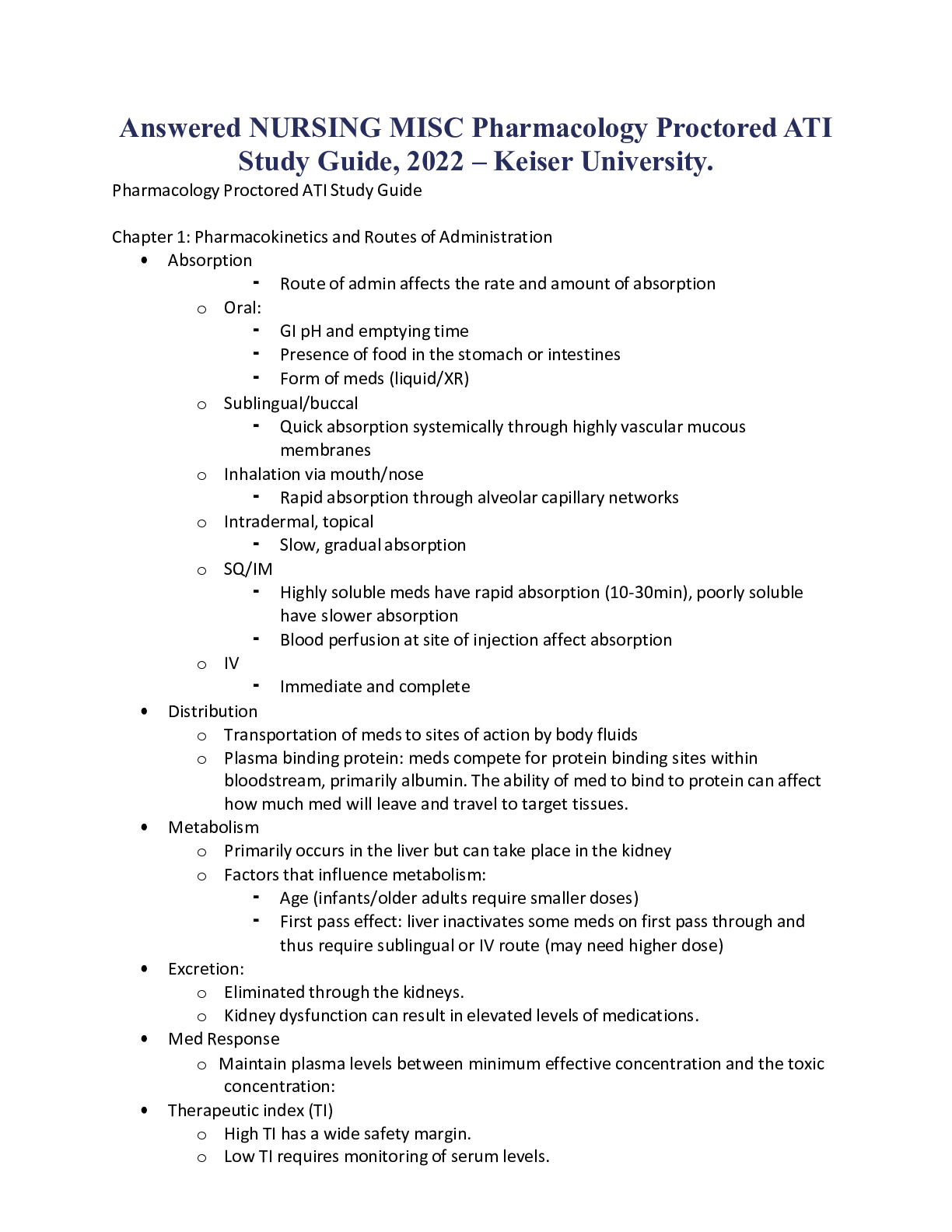
Reviews( 0 )
Document information
Connected school, study & course
About the document
Uploaded On
Mar 22, 2022
Number of pages
38
Written in
Additional information
This document has been written for:
Uploaded
Mar 22, 2022
Downloads
0
Views
59



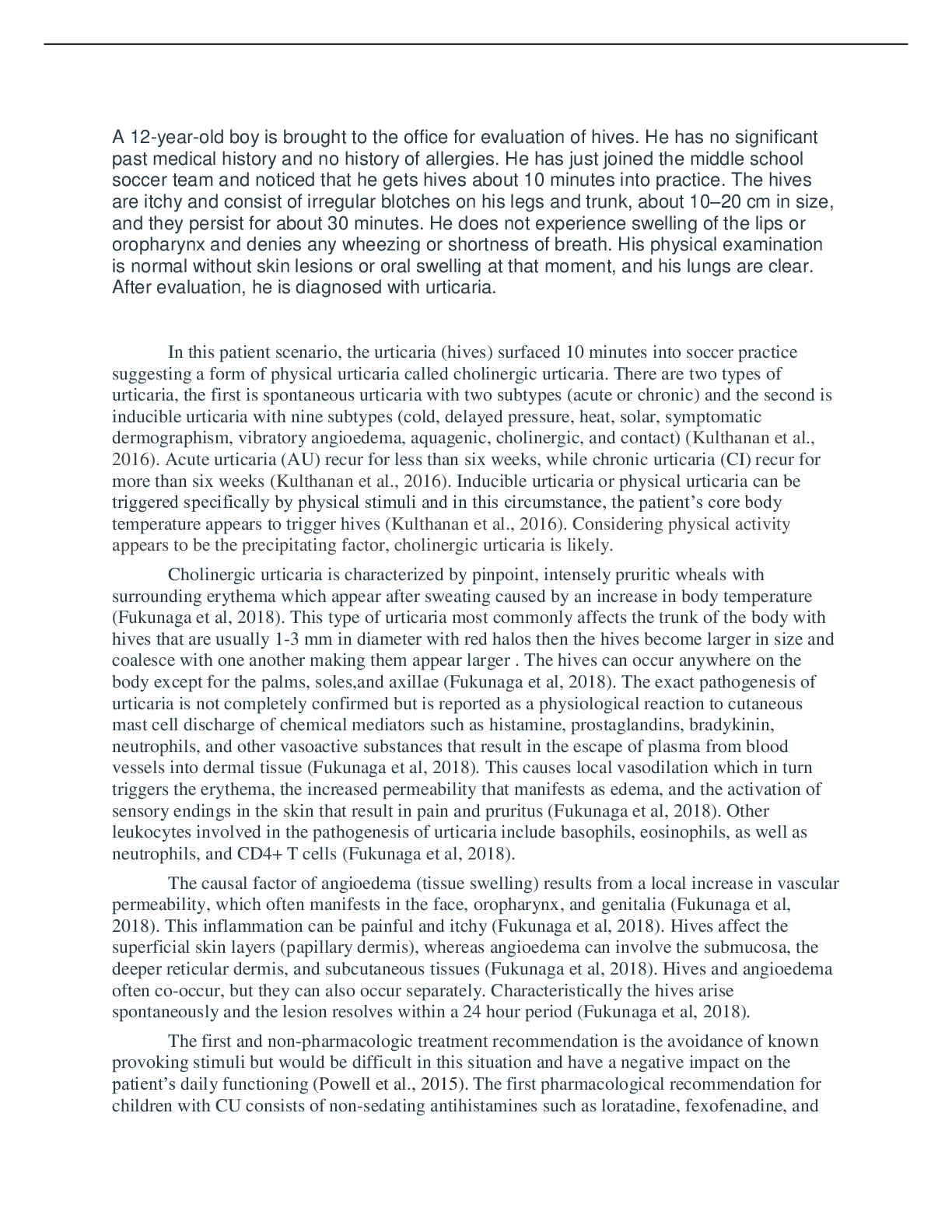
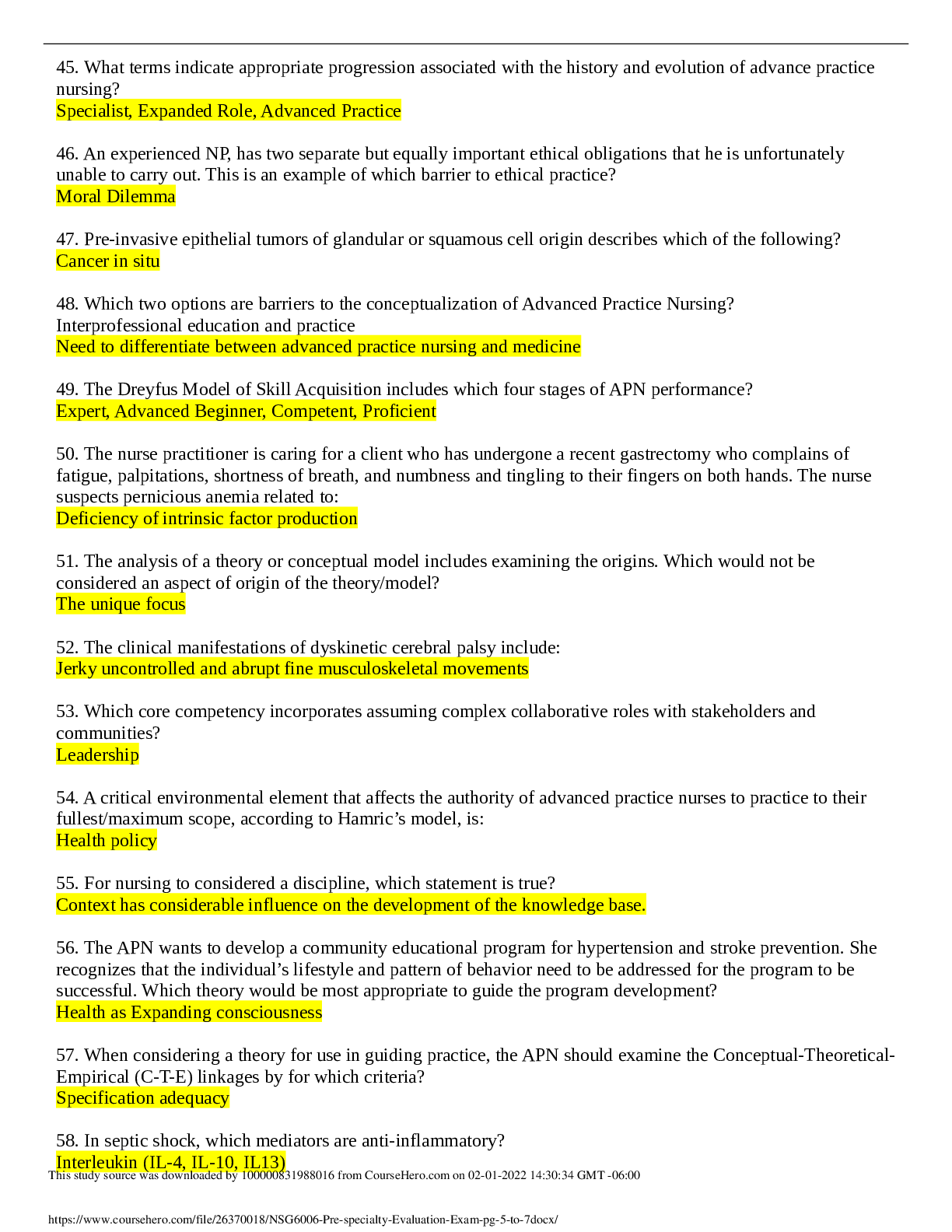


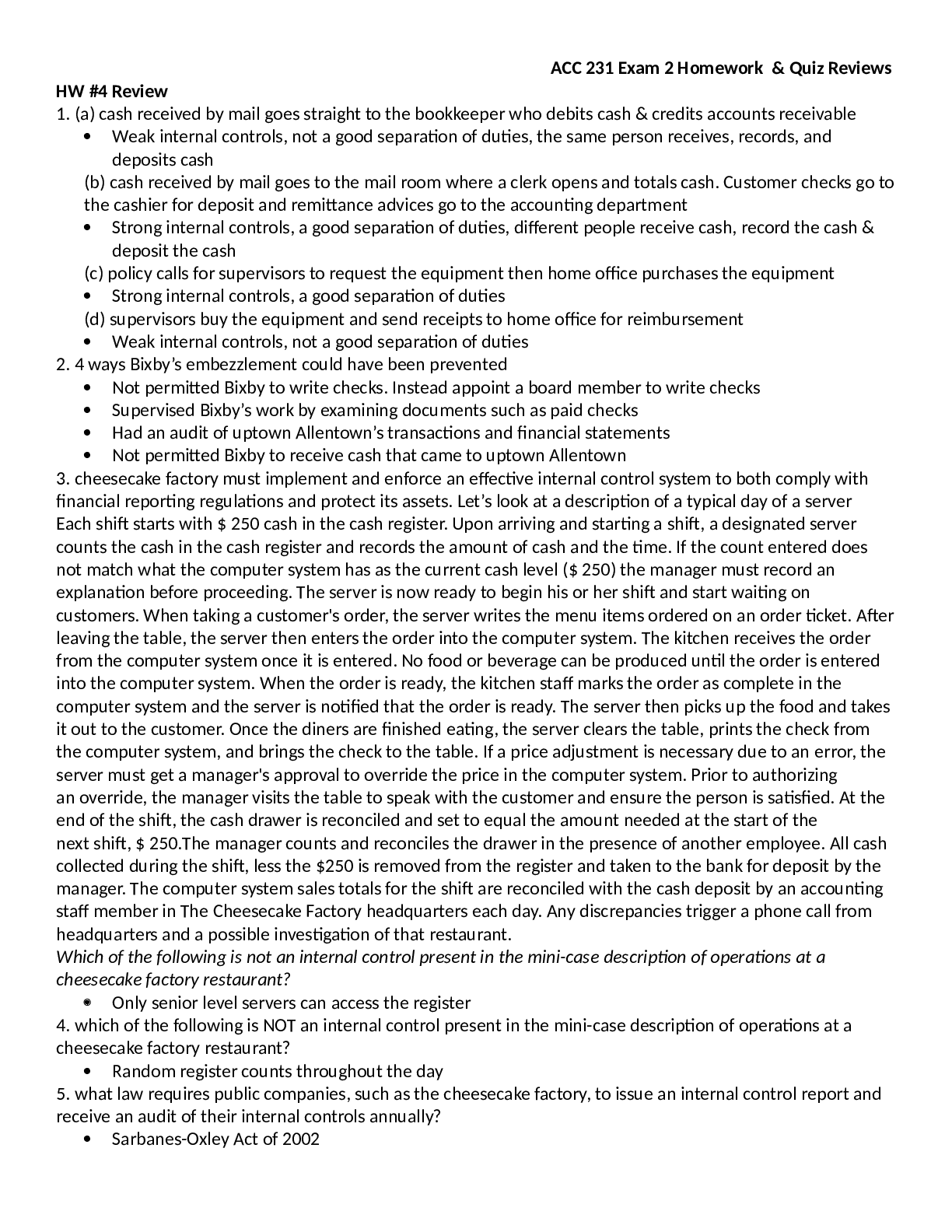

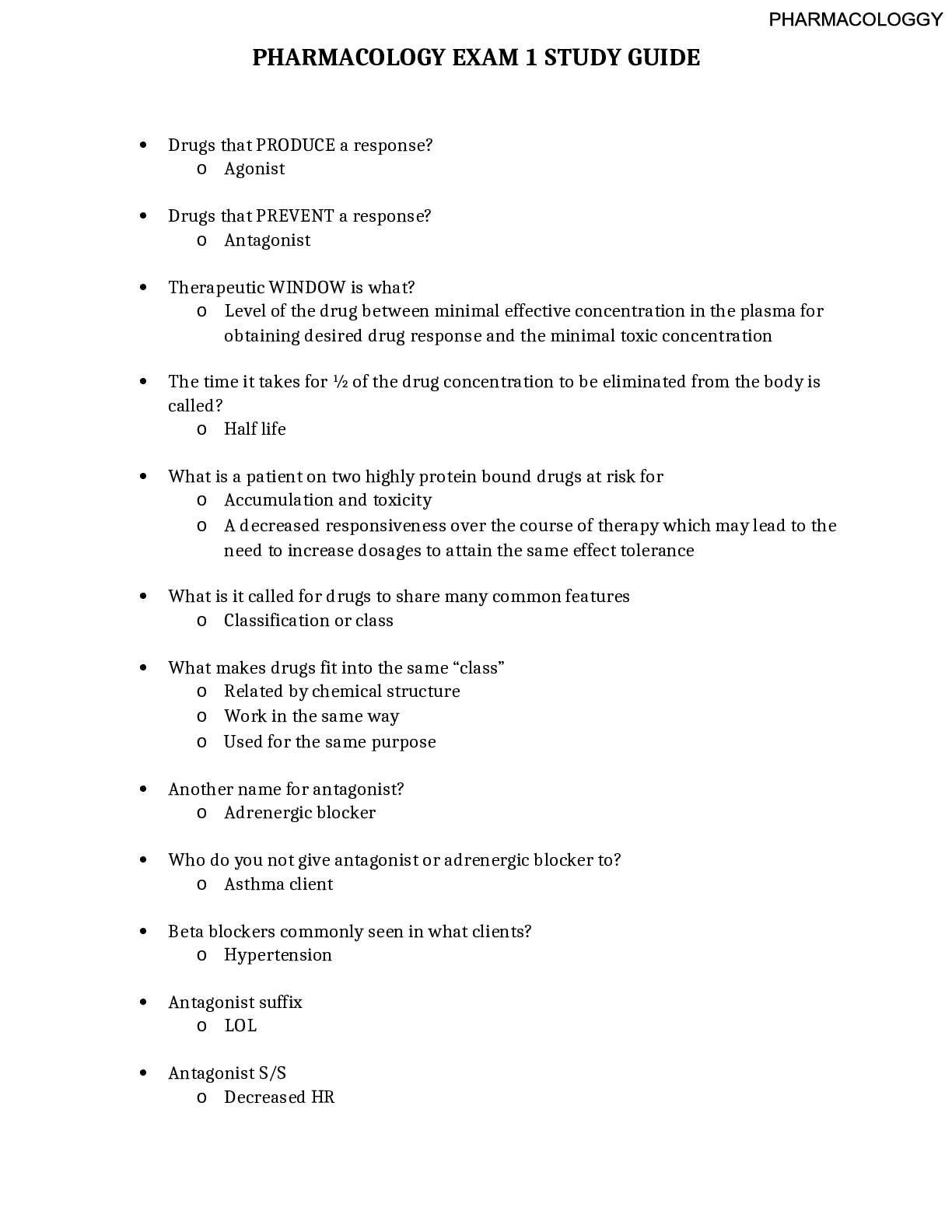
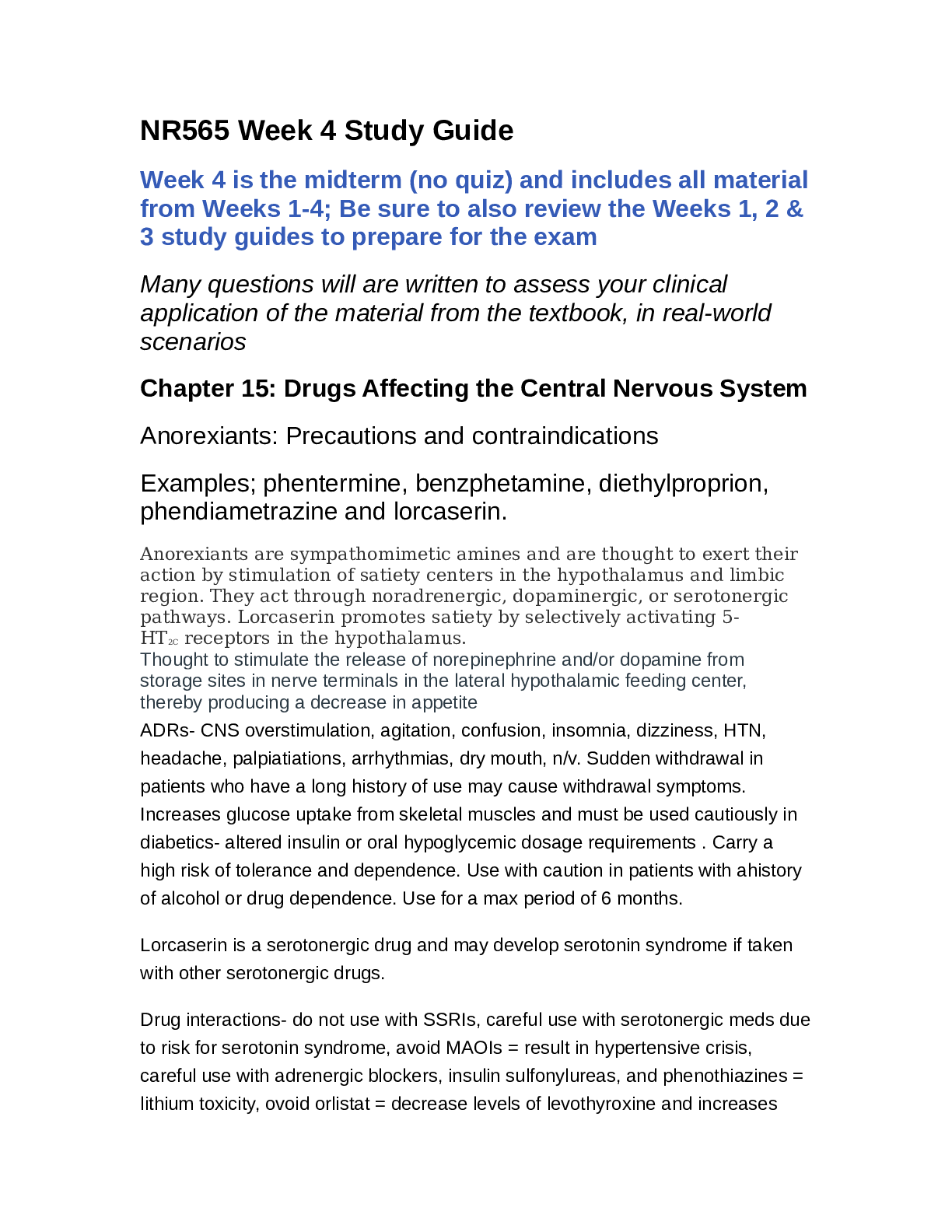



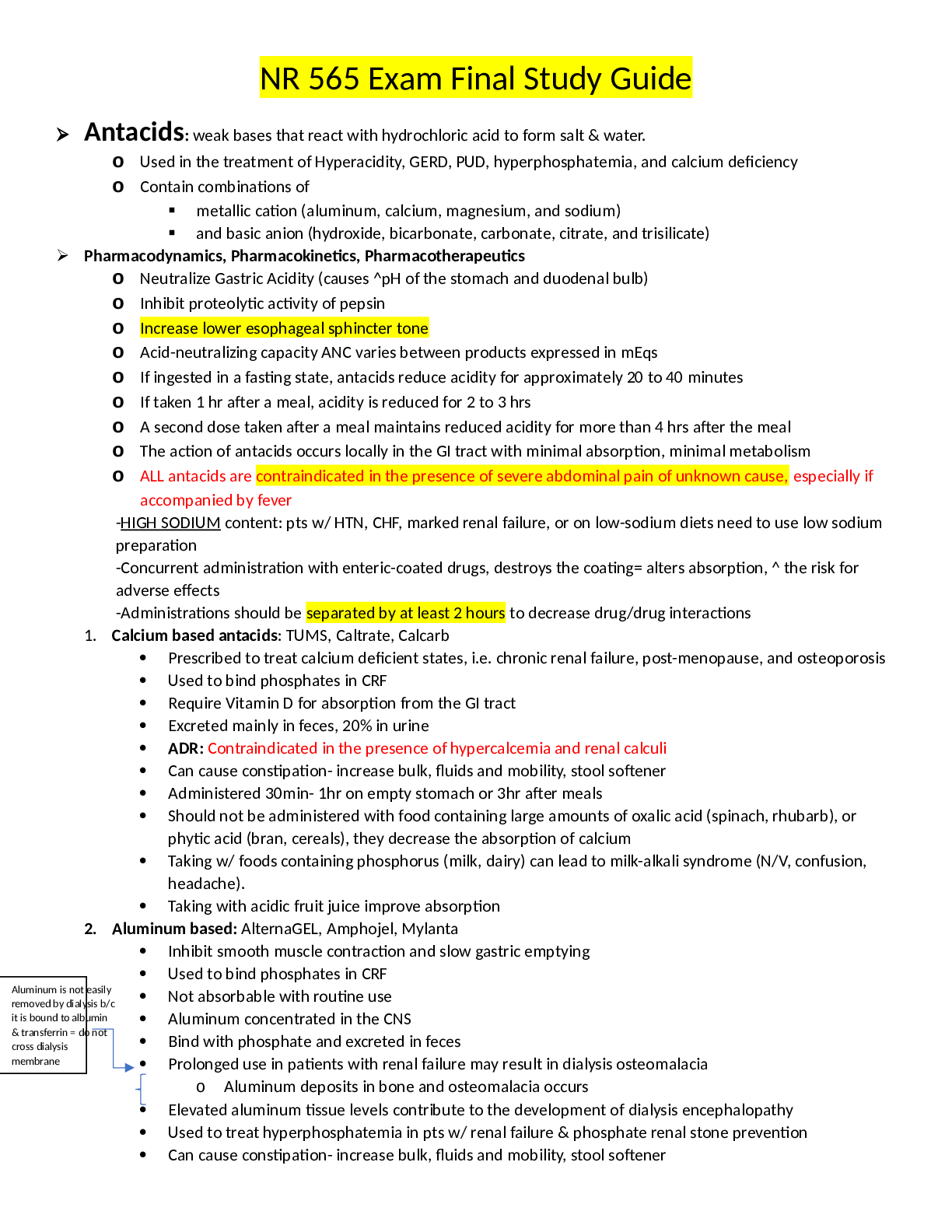
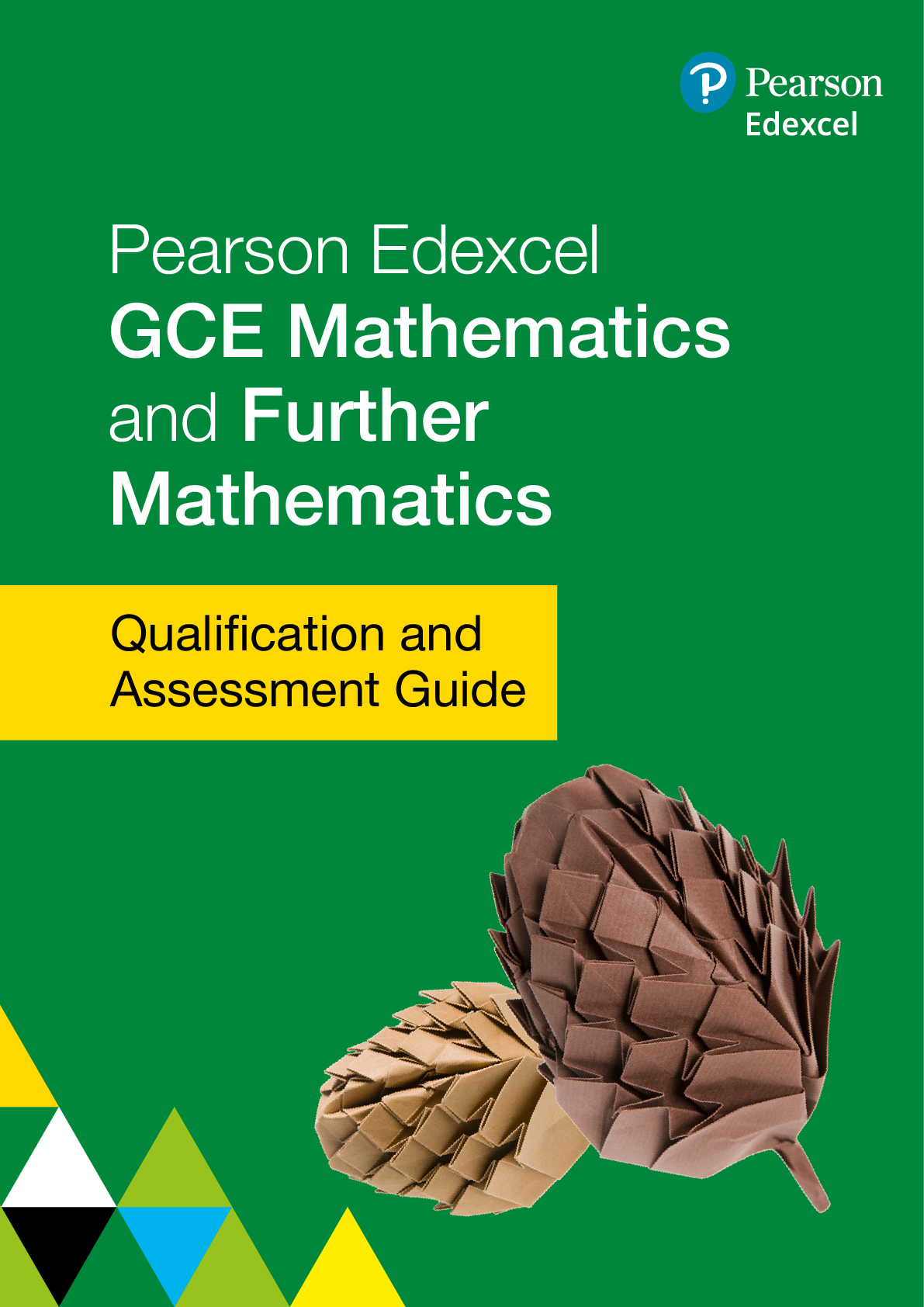
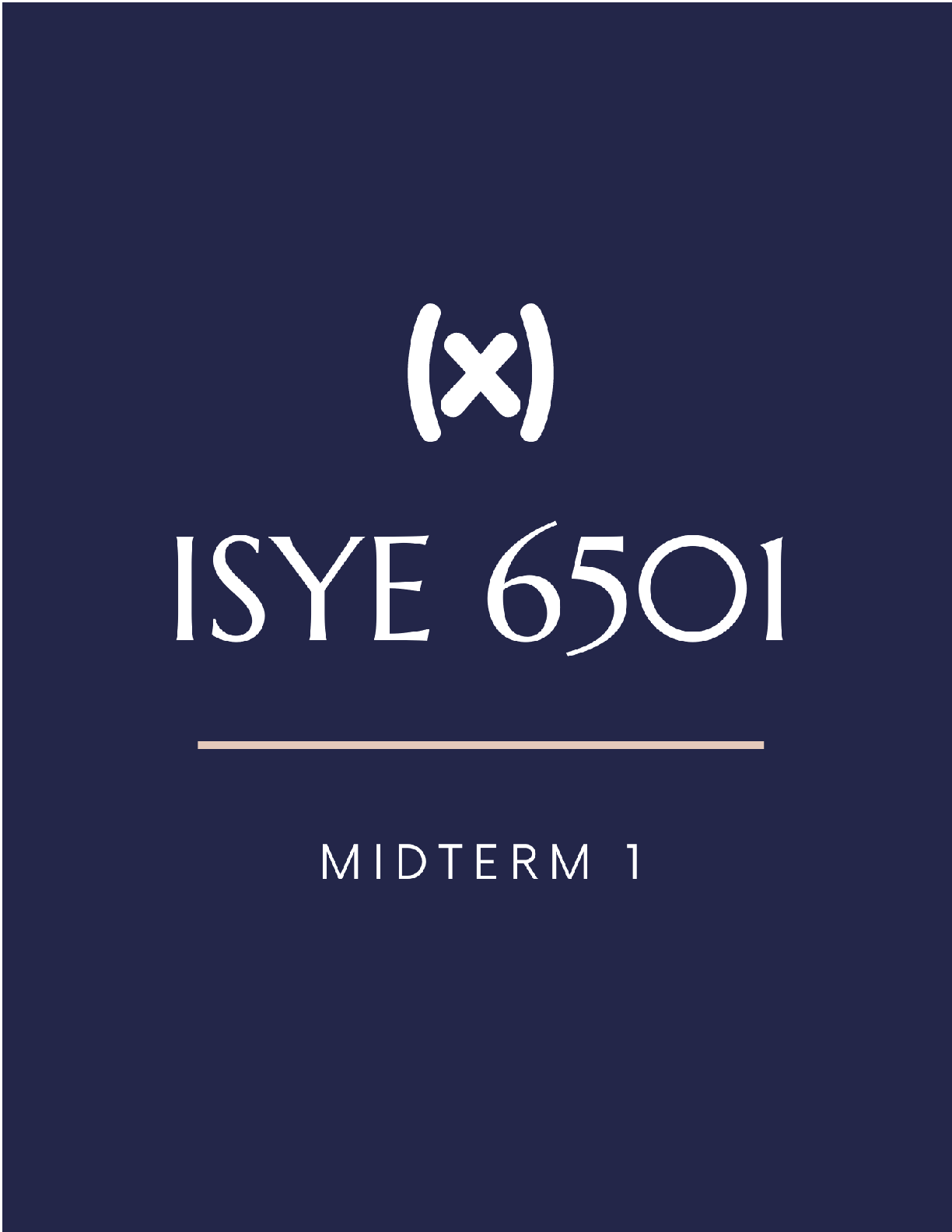
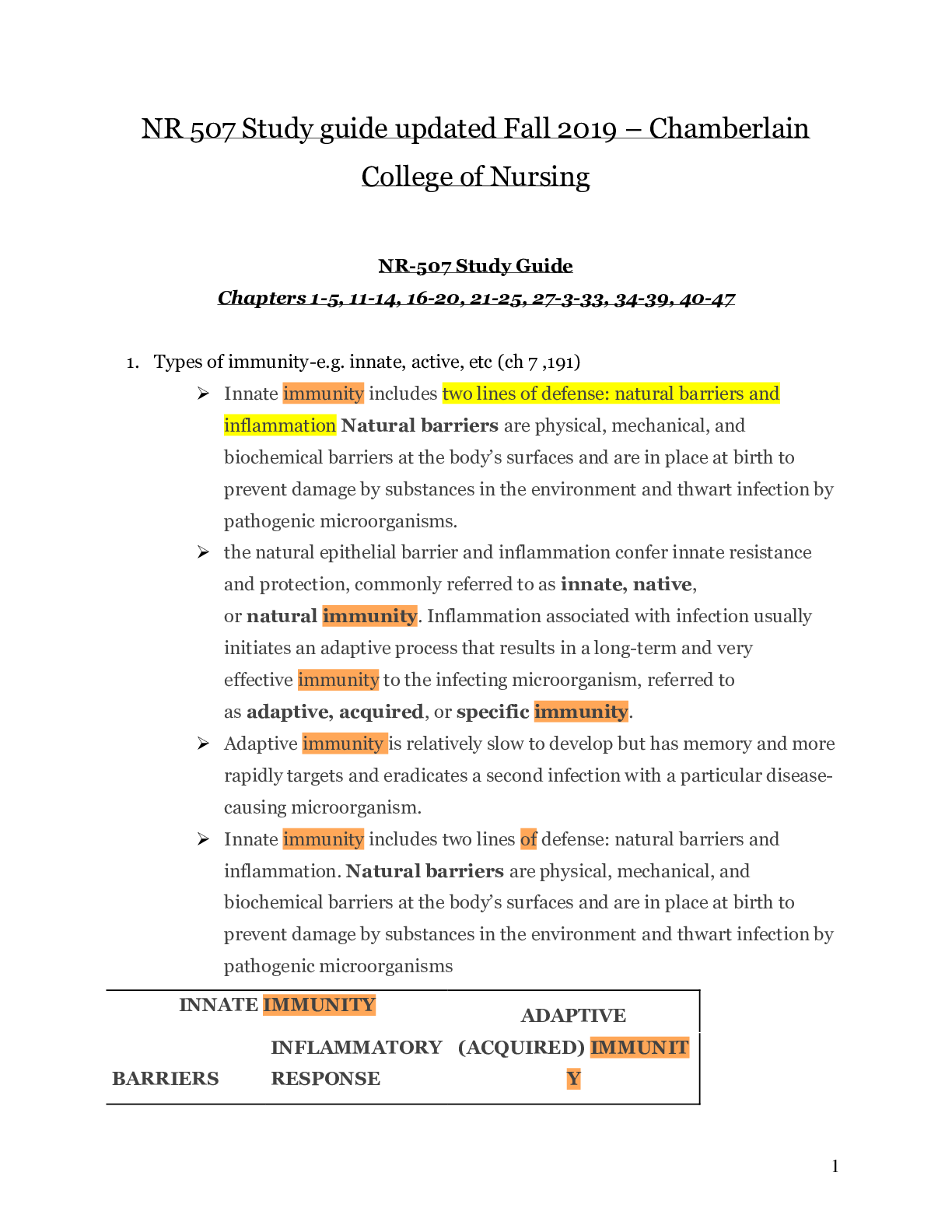
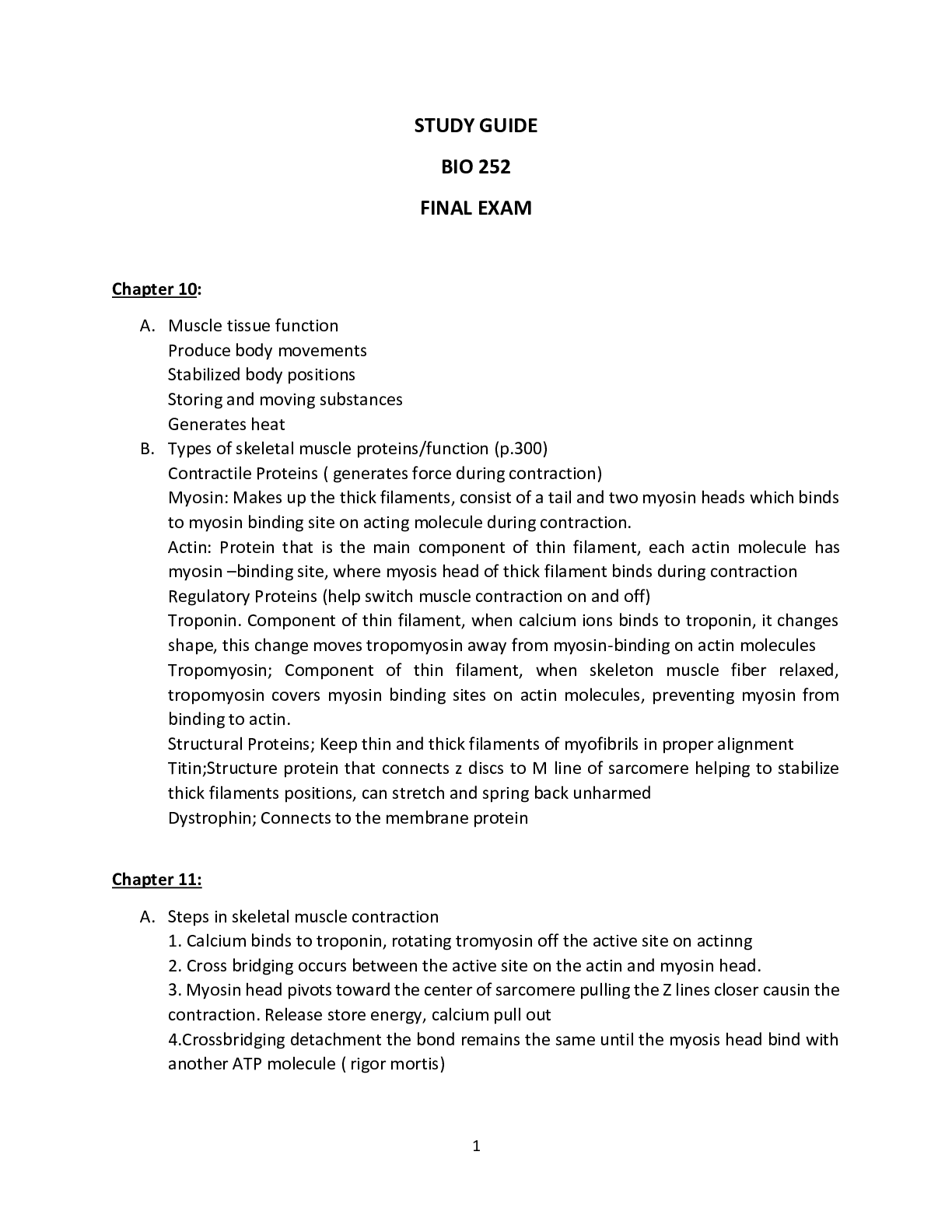
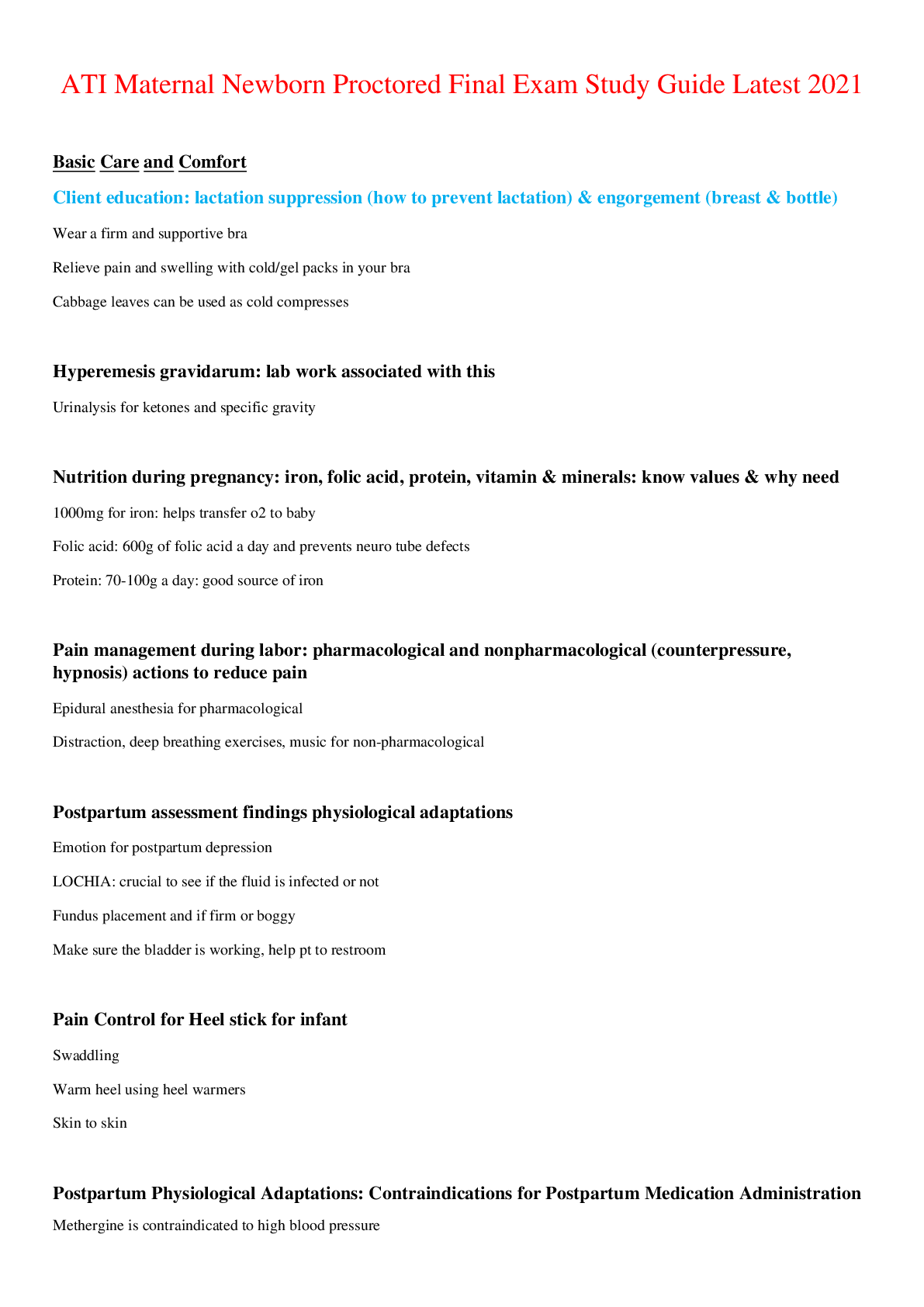
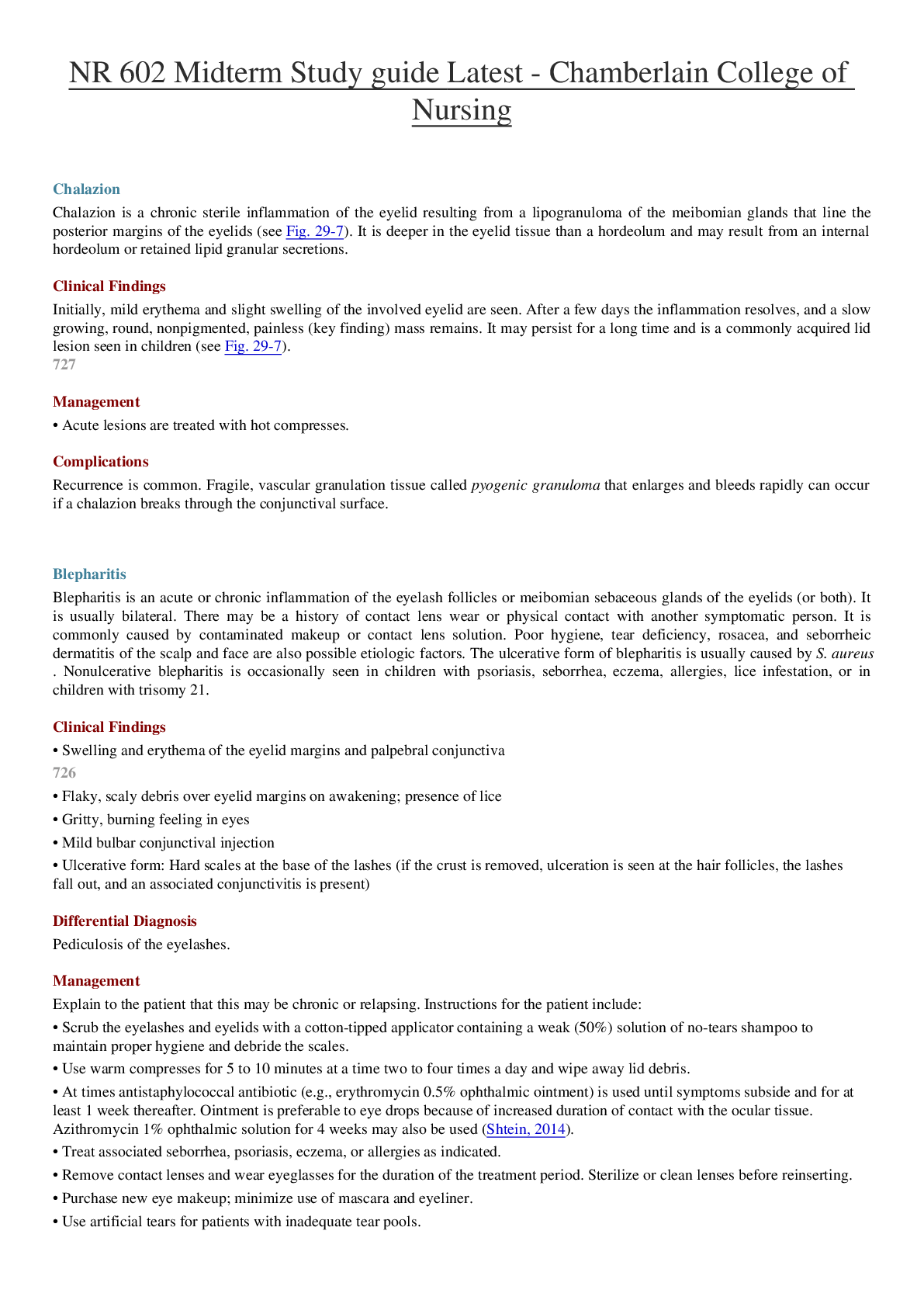
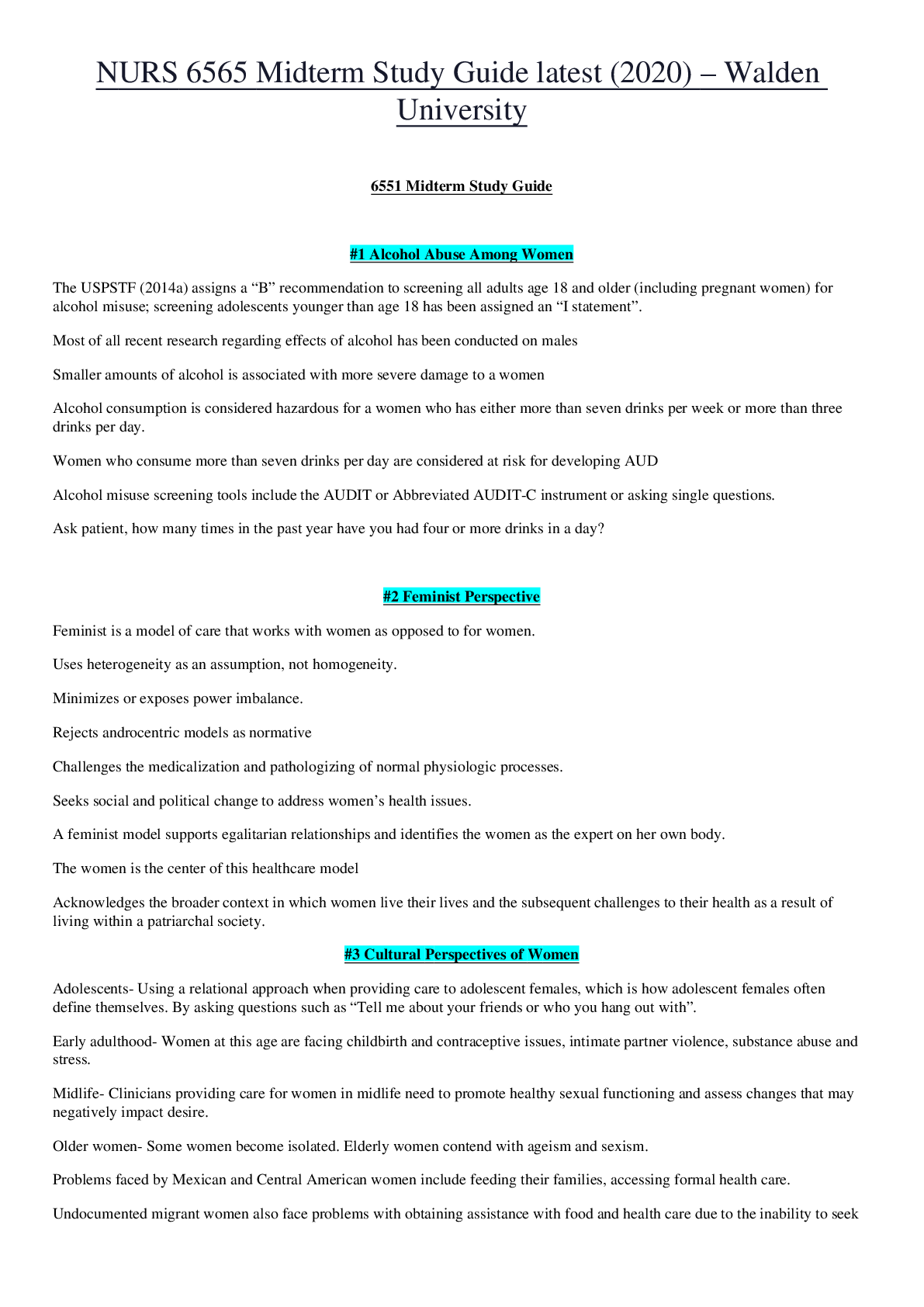


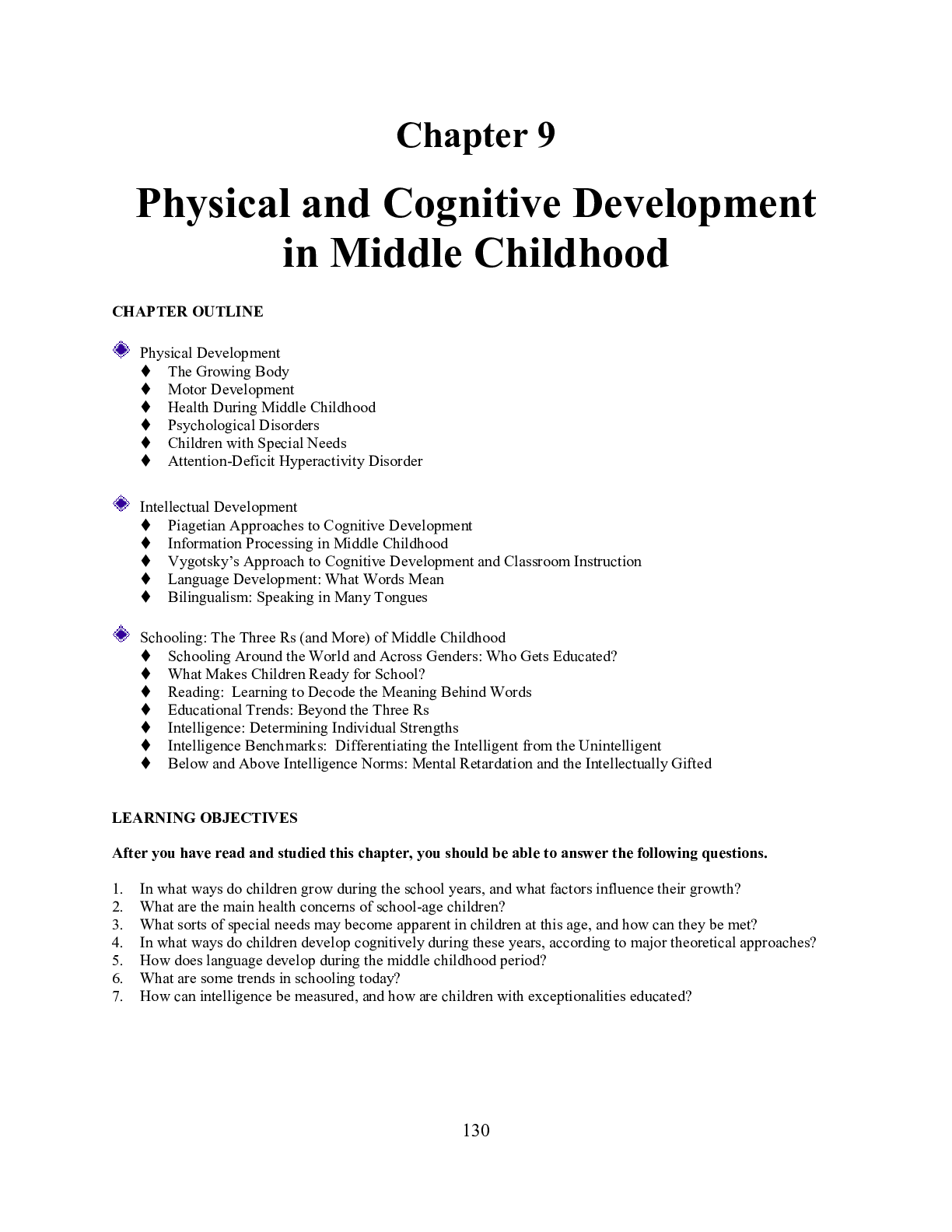
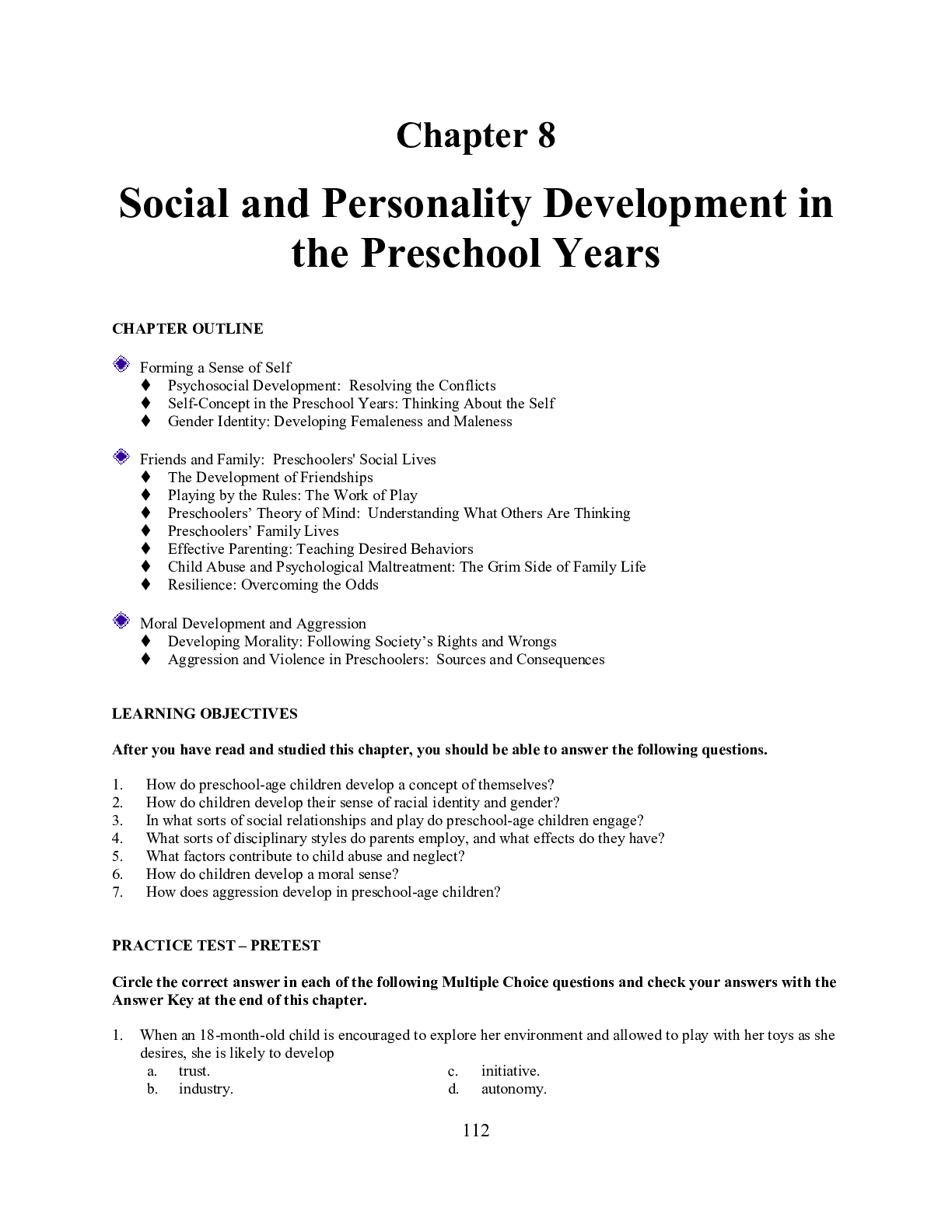
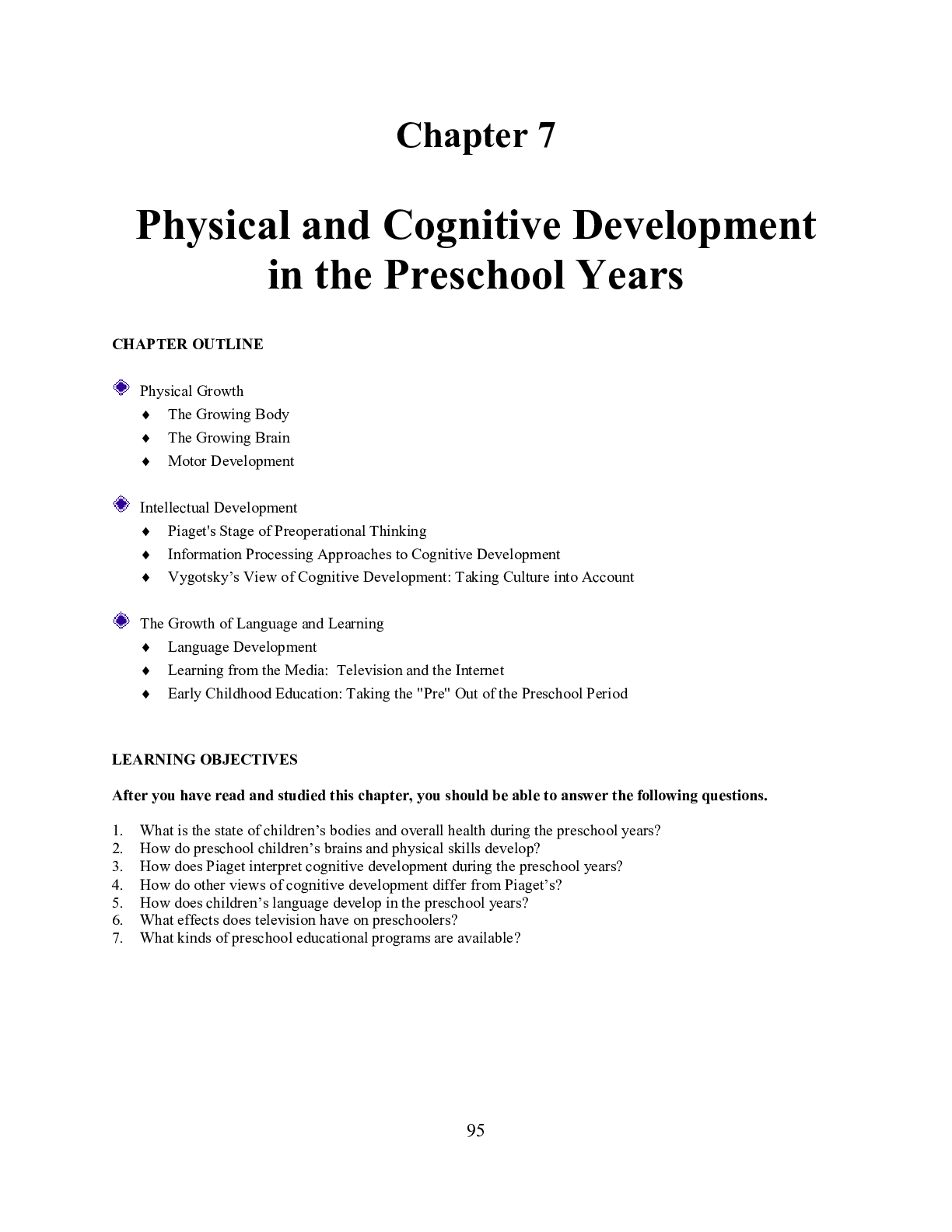
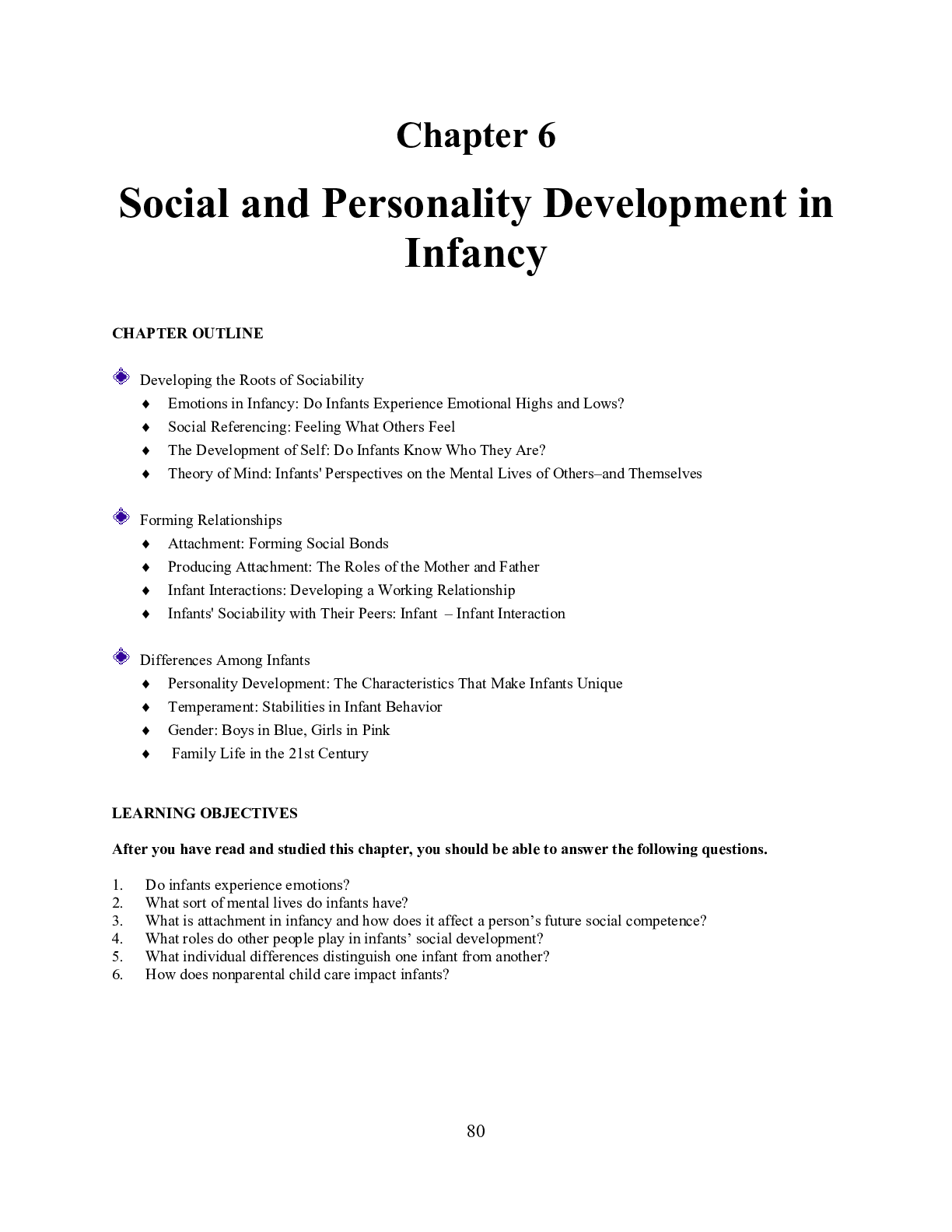
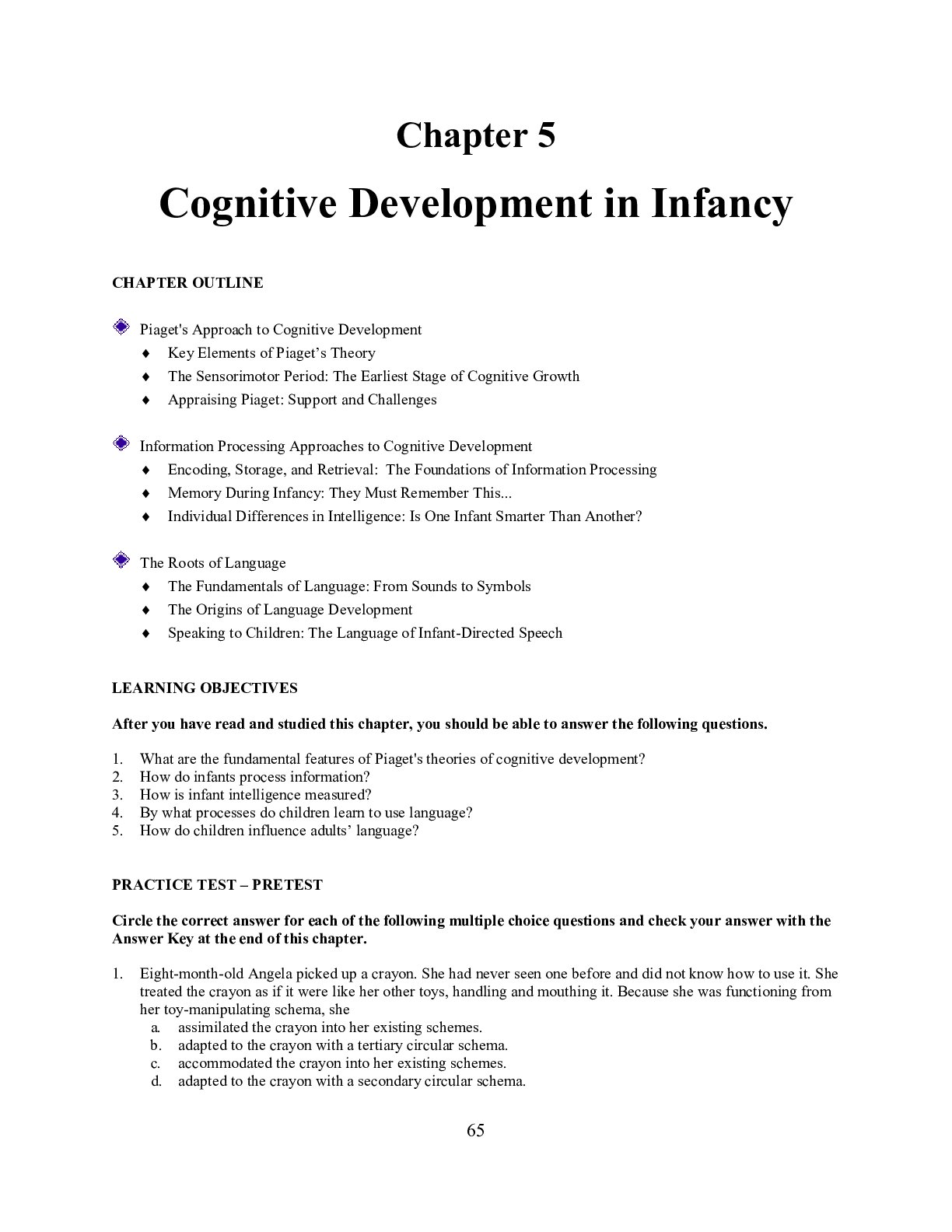
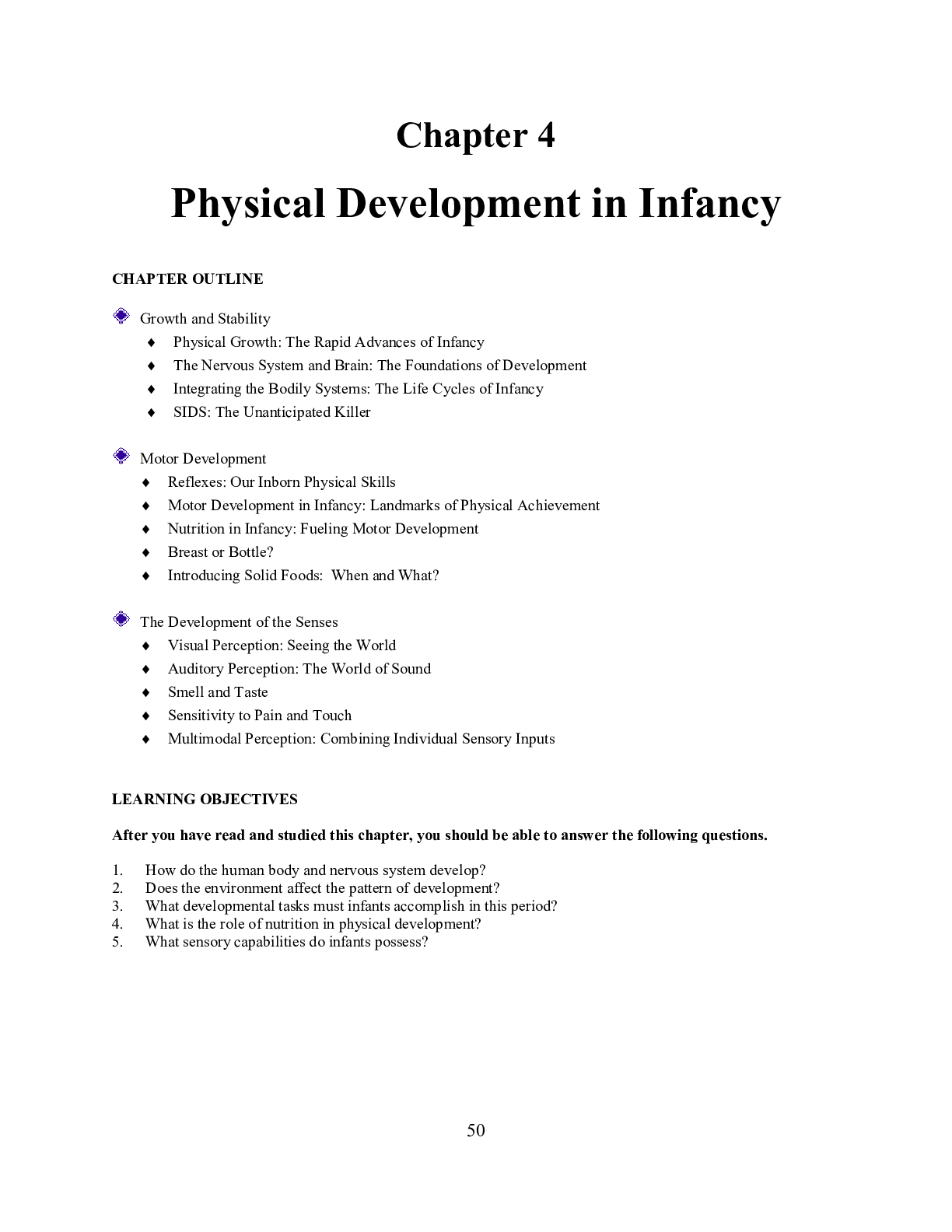

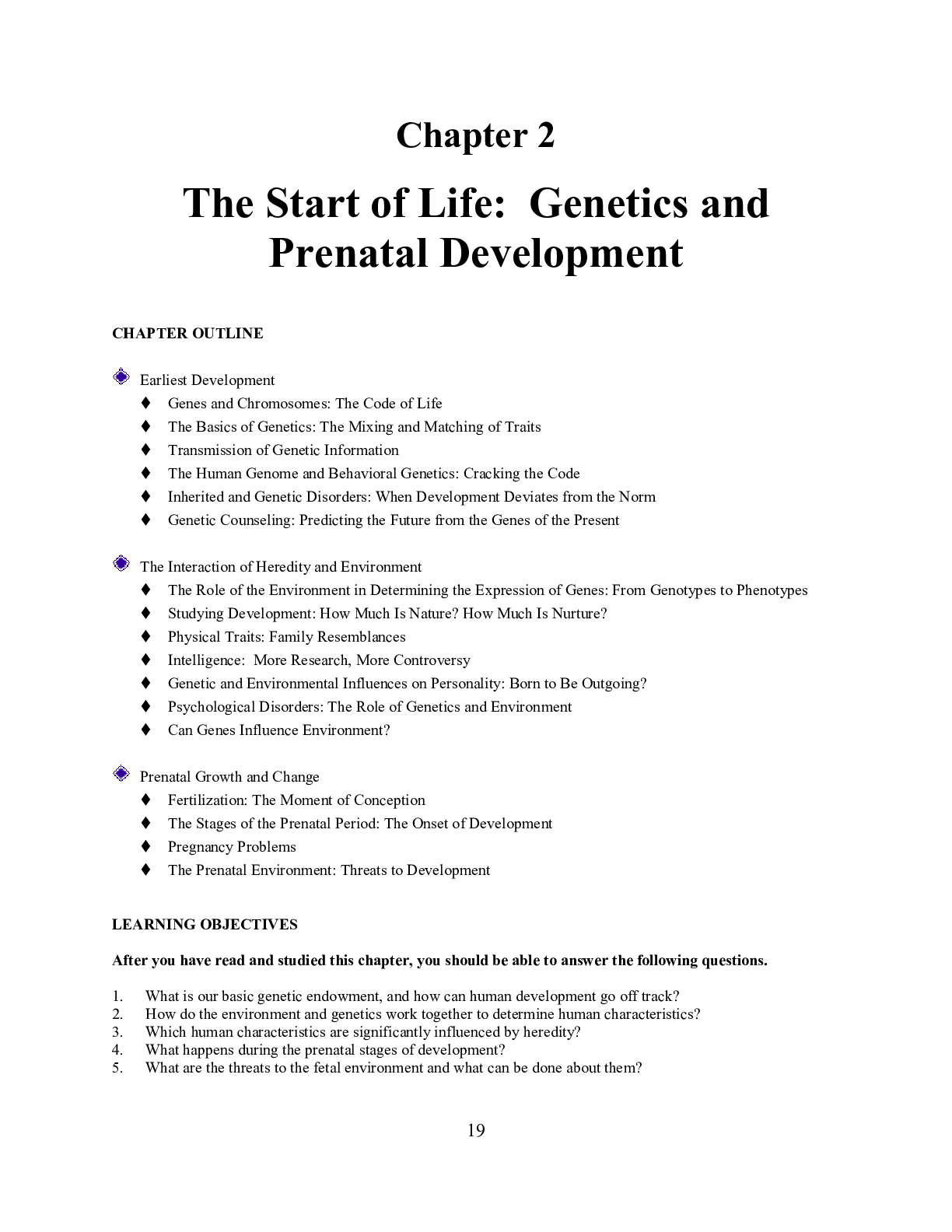
 Study Guide Latest 2022.png)


.png)

